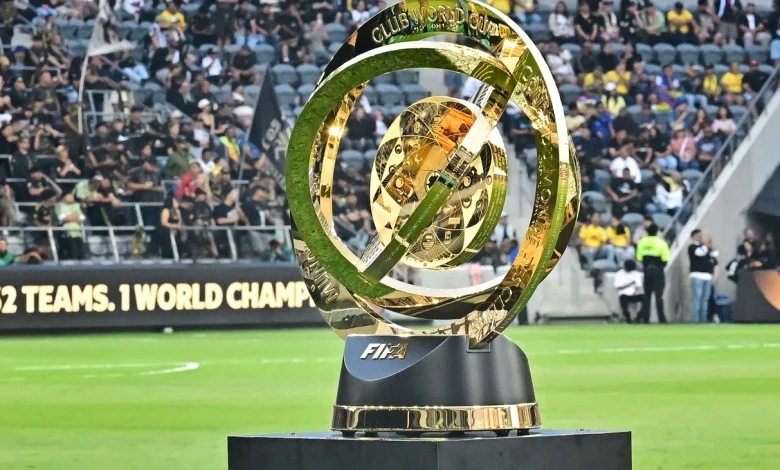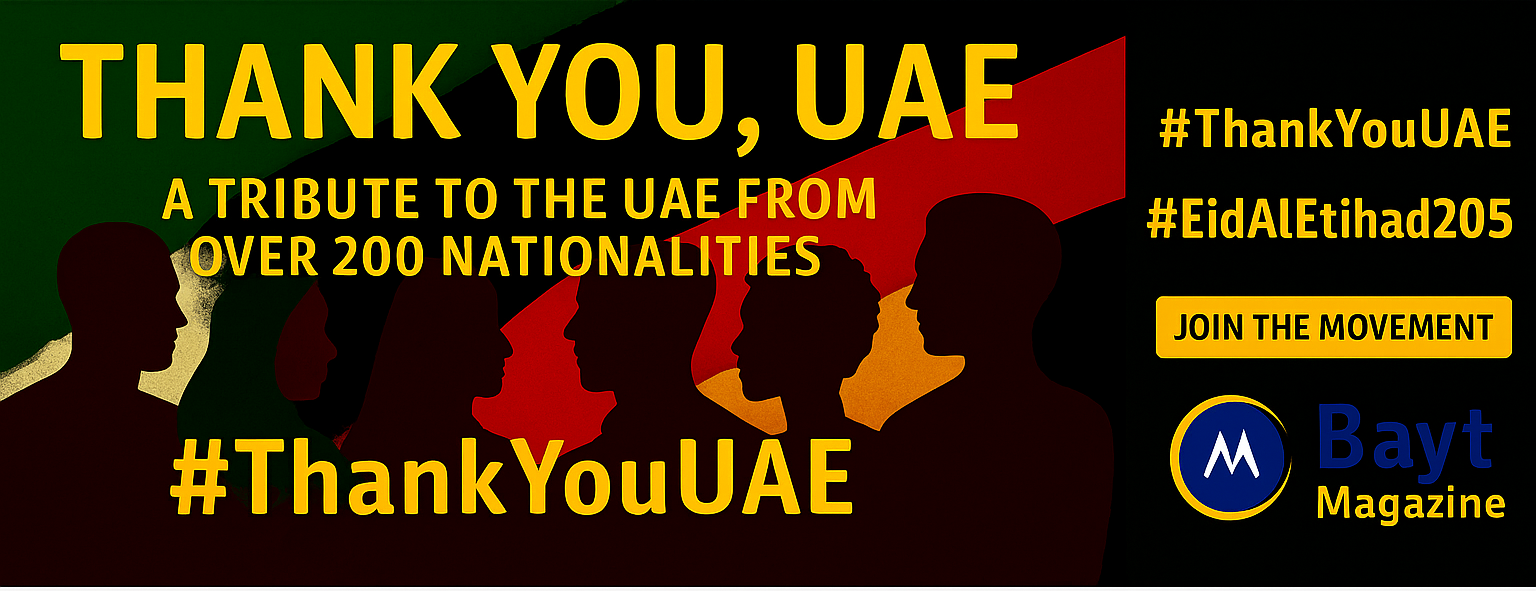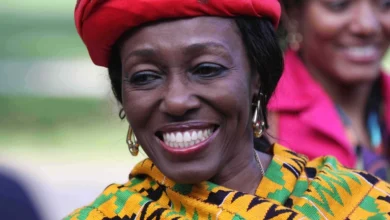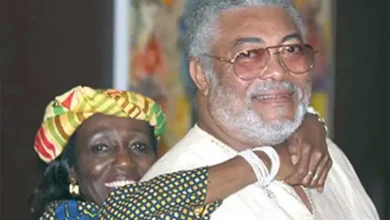
How the FIFA Club World Cup Became Football’s Global Stage
The Club World Cup stands at the brink of its biggest transformation since 2000. What started as an eight-team tournament has grown substantially into a global football spectacle. The 2025 edition will feature 32 teams competing in the United States from June 14 to July 13. This expanded FIFA Club World Cup serves as a vital stepping stone before the 2026 World Cup. Teams will compete for an unprecedented $1 billion prize pool, with winners taking home up to $125 million.
The tournament’s new format brings together football’s finest from around the globe. Europe leads with 12 teams, while South America sends 6 representatives. Asia, Africa, and North America will each field 4 teams. Oceania and the host nation round out the lineup with one team each. Real Madrid’s dominance shows in the Club World Cup stats with five titles. The tournament’s rich history spans from its first championship in Brazil, where Corinthians beat Vasco da Gama in a penalty shootout. Since then, it has showcased talent across Japan, the United Arab Emirates, Morocco, and Qatar. The 2025 edition introduces a group stage format that could reshape how teams approach this prestigious competition.
The birth of a global idea: Origins of the Club World Cup
Image Source: Goal.com
The story of crowning a “world champion” football club goes back much further than most fans might think. The first global club competition happened in 1887 when Aston Villa, the FA Cup winners, beat Scottish Cup winners Hibernian in a match called the “Football World Championship”. These teams represented the only two national competitions that existed back then.
Early attempts at global club competitions
The late 19th and early 20th centuries saw several experiments with international club competitions. Scottish champions Heart of Midlothian lost 5-3 to English champions Sunderland in 1895, in a match that people nicknamed the “World Championship”. The winning Sunderland team had quite a twist – every player was Scottish, and people called them the “Scotch Professors”.
FIFA recognizes the Sir Thomas Lipton Trophy of 1909 as the first true global club football tournament. Teams from England, Italy, Germany, and Switzerland competed, and an English amateur team, West Auckland, won both the 1909 and 1911 editions.
The Brazilian FA created the Copa Rio by the 1950s, which Brazilians nicknamed the “World Champions Cup”. FIFA president Jules Rimet said FIFA didn’t oversee this event, but FIFA officials Stanley Rous and Ottorino Barassi helped organize it. More than 200,000 fans watched Palmeiras beat Juventus at the Maracanã stadium, and Brazilian media celebrated them as the first club world champions.
Vasco da Gama’s 4-3 victory over European champions Real Madrid in the 1957 Tournoi de Paris marked another milestone. FIFA authorized the International Soccer League in 1960 with hopes of creating a Club World Cup. UEFA’s resistance stopped a proposed multicontinental Club World Cup from FIFA’s Executive Committee ten years later.
The 2000 launch and original challenges
The groundwork for today’s FIFA Club World Championship started years before its debut. AC Milan president Silvio Berlusconi pitched the idea to FIFA’s executive committee in Las Vegas back in December 1993, according to then-FIFA president Sepp Blatter.
Nine countries wanted to host the first tournament: China, Brazil, Mexico, Paraguay, Saudi Arabia, Tahiti, Turkey, the United States, and Uruguay. FIFA picked Brazil on June 7, 1999, after narrowing it down to four serious contenders (Saudi Arabia, Mexico, Brazil, and Uruguay). The tournament moved from its planned 1999 date to 2000.
The first FIFA Club World Championship ran from January 5-14, 2000. Eight teams that won their continental championships in 1999 took part:
- Corinthians and Vasco da Gama (Brazil)
- Manchester United (England)
- Necaxa (Mexico)
- Raja CA (Morocco)
- Real Madrid (Spain)
- Al-Nassr (Saudi Arabia)
- South Melbourne (Australia)
Corinthians beat Vasco da Gama 4-3 on penalties in an all-Brazilian final at Rio’s iconic Maracanã Stadium after a scoreless match. Manchester United’s participation sparked controversy because they had to skip the FA Cup – a decision that left British media and fans stunned.
Why the tournament was paused after 2000
The Club World Cup hit roadblocks right after its first tournament, despite big plans for the future. FIFA planned a bigger 12-club event in Spain for 2001. The organization canceled it on May 18, 2001, because of several issues.
International Sport and Leisure (ISL), FIFA’s marketing partner, went bankrupt – this proved to be the biggest setback. Problems finding broadcast partners and sponsors also played a part. FIFA paid each team from the canceled tournament about $2.75 million and gave the Spanish Football Federation $3.67 million as compensation.
The tournament stayed dormant from 2001 to 2004, and planned 2003 events never happened. The Intercontinental Cup between European and South American champions remained the main global club competition during this time.
FIFA brought the tournament back in 2005 as the FIFA Club World Cup. This comeback started its growth into the premier yearly tournament in global club football that we know today.
From Intercontinental to international: The format evolution
Image Source: Goal.com
The rise of the FIFA Club World Cup tournament format stands as one of football’s most fascinating structural changes. The competition has seen many important changes through its history. A tournament that started with only European and South American champions grew into a global spectacle.
Merging with the Intercontinental Cup
The Intercontinental Cup was football’s premier global club competition since 1960. European Cup winners faced Copa Libertadores champions in this tournament that served as the world club championship, though it included clubs from just two continents.
FIFA tried to create a more inclusive global tournament with the 2000 FIFA Club World Championship. The organization faced financial troubles when their marketing partner ISL went bankrupt. FIFA made a mutually beneficial alliance in 2005 to merge the Intercontinental Cup with the FIFA Club World Championship.
This merger meant more than just changing names – it aimed to honor the Intercontinental Cup’s legacy while creating a more inclusive global tournament. FIFA created a new trophy to mark this union. The 2005 tournament kept elements from both competitions. The structure was smaller than the original Club World Championship but larger than the Intercontinental Cup’s one-match format.
2005 relaunch and annual format
The 2005 relaunch created a knockout tournament where champions from four “weaker” confederations played in quarter-finals. Teams that lost competed in a fifth-place playoff. Winners moved forward to join European and South American champions in semi-finals. This structure created a balanced path that respected UEFA and CONMEBOL clubs’ historical dominance while giving others their chance.
The tournament became a soaring win and ran each December for about two weeks. São Paulo won this first merged edition by defeating Liverpool in the final. This annual format continued from 2005 through 2023 and became a fixture in global football’s calendar.
The tournament kept its seven-team structure with continental champions and became a reliable year-end showcase for global club football. The competition got its official title “FIFA Club World Cup” in 2006, completing its transformation.
2025 expansion to 32 teams
FIFA revealed plans for a dramatically expanded Club World Cup format with 32 teams in March 2019. China was set to host in 2021, but COVID-19 forced a delay. FIFA announced in June 2023 that the United States would host the 2025 tournament before the 2026 FIFA World Cup.
The expanded tournament will run from June 14 to July 13, 2025, marking the competition’s 21st edition. The format matches the FIFA World Cup structure used between 1998 and 2022:
- 32 teams divided into eight groups of four
- Round-robin group stage with each team playing three matches
- Top two teams from each group advance to knockout rounds
- Straight elimination format with round of 16, quarterfinals, semifinals, and final
- No third-place playoff
This tournament will happen every four years instead of yearly. The qualification process gives slots based on confederation strength:
- UEFA (Europe): 12 slots
- CONMEBOL (South America): 6 slots
- AFC (Asia): 4 slots
- CAF (Africa): 4 slots
- CONCACAF (North/Central America): 4 slots (plus an extra due to hosting)
- OFC (Oceania): 1 slot
FIFA will keep an annual international club competition despite this expansion. The traditional yearly tournament continues as the “FIFA Intercontinental Cup,” where six continental champions compete in a knockout format.
Continental clashes: How different regions shaped the tournament
Image Source: Goal.com
“Aguinaga was brilliant against Manchester” — Agustin Delgado, Former Ecuadorian footballer who played in the FIFA Club World Cup
The FIFA Club World Cup’s history shows how football power has moved between continents. Continental rivalries have made this global tournament exciting. The competition has seen everything from South American excellence to European dominance and new challengers emerging.
South American dominance in early years
Brazilian clubs dominated the FIFA Club World Cup in its early days. The first tournament in 2000 proved this with two Brazilian teams facing off at the Maracanã Stadium. Corinthians beat Vasco da Gama in an exciting penalty shootout after neither team scored during the match.
Brazilian teams kept winning after the tournament’s five-year break. São Paulo won the 2005 competition by beating Liverpool 1-0 in Yokohama, Japan. Internacional did the same thing next year, defeating Barcelona with the same score at the same place. These Brazilian victories showed South American club football’s amazing skill and tactical brilliance during that time.
European clubs take over
The power balance changed in 2007. AC Milan ended Brazil’s winning streak by beating Argentina’s Boca Juniors 4-2. This victory started Europe’s incredible run in the tournament.
European teams have won 15 out of the last 16 tournaments since 2007. Real Madrid became the most successful team with five titles. They won their first in 2014 and then three in a row from 2016 to 2018. Their latest win came in 2022 when they beat Saudi Arabia’s Al Hilal 5-3.
Barcelona also became a powerhouse with wins in 2009 and 2011. Their 2011 victory included an impressive 4-0 win against Santos. Bayern Munich grabbed two titles in 2013 and 2020, while Manchester United, Inter Milan, Chelsea, and Manchester City each won once.
European teams win so much because they have more money to get the best players. They also have excellent tactical preparation and deeper squads than teams from other regions.
Breakthroughs from Africa, Asia, and Oceania
Teams from other continents have had their moments despite Europe’s control. TP Mazembe made history in 2010. The team from the Democratic Republic of Congo became the first non-European and non-South American team to reach the final after beating Brazil’s Internacional 2-0.
Asian football has grown stronger in the tournament. Al Hilal showed this by reaching the 2022 final against Real Madrid. Asia will send four teams to the expanded 2025 tournament: Al Hilal from Saudi Arabia, Urawa Red Diamonds from Japan, Al Ain from UAE, and Ulsan HD from South Korea.
Africa will have four teams in 2025: Al Ahly (Egypt), Espérance Sportive de Tunis (Tunisia), Mamelodi Sundowns (South Africa), and Wydad AC (Morocco). These teams hope to match TP Mazembe’s amazing 2010 performance.
New Zealand’s Auckland City FC represents Oceania more than any other team from their region. The 2025 tournament will be their 12th appearance. They qualified by winning the OFC Men’s Champions League 11 times in 14 years.
The 2025 tournament will feature 32 teams from all six confederations. This makes it the most diverse Club World Cup ever. Teams outside Europe and South America now have their best chance to challenge football’s traditional powers on the global stage.
The legends and the numbers: Club World Cup stats that matter
Image Source: MyJoyOnline
“The only time you should think about winning the World Cup is when you’re holding it above your head in celebration once the final is over.” — Anonymous, Quote featured on Goodreads World Cup Quotes collection
Statistics tell an amazing story about the FIFA Club World Cup’s rich history that goes beyond match results. The tournament’s expansion to 32 teams in 2025 reveals patterns of dominance and remarkable individual achievements through the numbers.
Most successful clubs and countries
Real Madrid reigns supreme as the Club World Cup champions with five titles (2014, 2016-2018, 2022). Their dominance shows in three straight championships. Their rivals Barcelona hold three trophies, making Spain the most successful nation with eight titles.
Brazilian clubs showed early dominance when Corinthians won twice (2000, 2012). They stand out as the only world champion that qualified through their status as host nation champions. Brazil shares second place with England at four titles each.
Bayern Munich stands out among clubs with multiple appearances. They maintain both a perfect winning record and haven’t conceded a single goal during tournament play.
Top scorers and appearances
Football’s greatest talents shine in the scoring charts. Cristiano Ronaldo tops the list with seven goals in eight matches (0.88 goals per game) while playing for Manchester United and Real Madrid. Gareth Bale comes next with six goals in six appearances (1.0 goal per game).
Luis Suarez achieved something special with five goals in just two appearances (2.5 goals per game) during Barcelona’s 2015 victory. Lionel Messi matches this number with five goals in five games.
Hussein Elshahat leads the appearance count with 15 matches. Auckland City’s Emiliano Tade set a record by playing in nine tournaments (2011-2017, 2022-2023).
FIFA Club World Cup stats that define greatness
Brazilian players lead the competition’s global representation with 142 participants. Argentinians follow with 104 players, then Spaniards (54), and Portuguese (49).
The 2025 tournament will showcase 26 FIFA World Cup winners. These champions include two Spaniards from 2010, two Germans from 2014, nine Frenchmen from 2018, and thirteen Argentinians from 2022. Stars like Sergio Busquets, Kylian Mbappé, and Lionel Messi will take part.
Players’ ages and physical attributes add another fascinating dimension. Urawa Red Diamonds’ Takeshi Wada holds the record as the youngest recent participant at 16 years old. Fluminense’s Gustavo Ramalho towers above others at 2.01 meters. Al Hilal’s Kaio Cesar and Fluminense’s Yeferson Soteldo share the shortest player title at 1.60 meters.
The 2025 revolution: What’s new and what it means
Image Source: Goal.com
FIFA’s Club World Cup will launch in 2025 with a brand new format. This revolutionary tournament will feature four times more teams and much higher stakes, which will revolutionize the international club football scene.
New qualification rules and team slots
The 2025 Club World Cup brings an exciting 32-team format that welcomes teams from every corner of the globe. Each continent gets a specific number of team slots:
- Europe (UEFA): 12 spots
- South America (CONMEBOL): 6 spots
- Africa (CAF): 4 spots
- Asia (AFC): 4 spots
- North/Central America (CONCACAF): 4 spots
- Oceania (OFC): 1 spot
- Host nation (USA): 1 additional spot
Recent Champions League winners get first priority for qualification spots. The remaining places go to clubs based on their coefficient rankings. This system rewards both championship victories and consistent performance. Chelsea, Real Madrid, and Manchester City have already earned their spots thanks to their Champions League victories.
Host cities and stadiums in the USA
The USA will welcome this groundbreaking tournament from June 15 to July 13, 2025. This event serves as a perfect test run for the 2026 World Cup. Major cities like New York, Los Angeles, and Miami will likely host matches. The tournament will use modern NFL stadiums that offer excellent facilities and can handle large crowds.
Prize money and commercial stakes
The 2025 Club World Cup offers record-breaking financial rewards. Teams will share a massive $2 billion prize pool, with substantial appearance fees for each participant. The winners could take home up to $100 million, making this tournament financially significant.
Broadcasting rights and sponsorship deals will create extra revenue streams. FIFA expects the tournament to bring in more than $4 billion in total revenue, making it one of global sports’ biggest money-makers. Teams also benefit from exposure in the American market, which European clubs see as crucial for their international growth plans.
Criticism, controversy, and the future of the tournament
FIFA’s grand ambitions for an expanded Club World Cup face strong pushback from players, leagues, and unions. FIFA’s preparations for the 2025 showcase event continue but growing concerns could derail its future.
Player fatigue and scheduling issues
Top footballers’ schedules have hit a critical point. Players who compete in Euro 2024, the 2025 Club World Cup, and the 2026 World Cup will play three summers straight with little rest. FIFPro, the global players’ union, slams the schedule as “a lack of consideration for the mental and physical health of participating players”.
Numbers tell a worrying story. Benfica’s Kerem Akturkoglu had played 55 games by April 2025. Real Madrid’s Federico Valverde might reach 78 games. These heavy workloads led FIFPro and European Leagues to ask the European Commission to step in. They accused FIFA of “abuse of dominance” in October 2024.
“We face one of the biggest problems in our sport,” says FIFPro Europe president David Terrier. He believes FIFA’s push for “more matches, more competitions, more money” creates “dangerous mental and physical fatigue”.
Debates over prestige and relevance
Players’ views on the Club World Cup compared to other tournaments remain unclear. Former Spanish coach Javier Clemente puts it this way: “The tournament’s title definitely sparkles, but alas, it arrives on the heels of a punishing season, leaving players utterly spent”.
Money talks – the tournament offers AED 3.67 billion in total prize money. Prize distribution has sparked debates. European teams get between AED 47.04 million and AED 140.23 million just to show up. Oceania’s representative receives only AED 13.15 million.
Can the Club World Cup become football’s true global stage?
The tournament’s success hinges on finding middle ground between FIFA’s business goals and player welfare. FIFA president Gianni Infantino foresees a competition matching the Champions League’s prestige. This is a big deal as it means that projected revenues exceed AED 3.67 billion.
One analysis states it clearly: “Soccer did not need a Club World Cup—its calendar was already overcrowded, and the Champions League winner is widely considered the best club team in the world. But FIFA and Infantino needed market share”.
The tournament’s biggest challenge lies ahead – can it become football’s true global stage while global competition grows fiercer and scheduling conflicts multiply?
The FIFA Club World Cup has reached a crucial point in its rise. The tournament’s trip from its first event in 2000 to the upcoming 32-team showcase shows how it survived money problems, format updates, and power shifts between continents. Real Madrid’s five titles show European dominance that took over from early Brazilian wins. Teams from Africa and Asia keep making big moves on the global stage.
The 2025 tournament brings huge opportunities and major hurdles. A massive $2 billion prize pool will definitely raise the stakes. The bigger format welcomes teams of all sizes across the football world. Yet growing worries about player health challenge this big vision because elite players face packed schedules without enough rest.
This tournament’s future success depends on fixing these core issues. FIFA needs to balance profit goals against the rising player exhaustion problems that FIFPro and various leagues point out. Building real prestige like continental championships needs more than just money incentives – it needs genuine support from players, clubs and fans.
The Club World Cup is football’s most daring shot at creating a worldwide club competition. The tournament might exceed its disputes to become the biggest international club trophy. The final verdict will come not just from FIFA’s boardroom choices but from the football quality shown on American fields in summer 2025.





